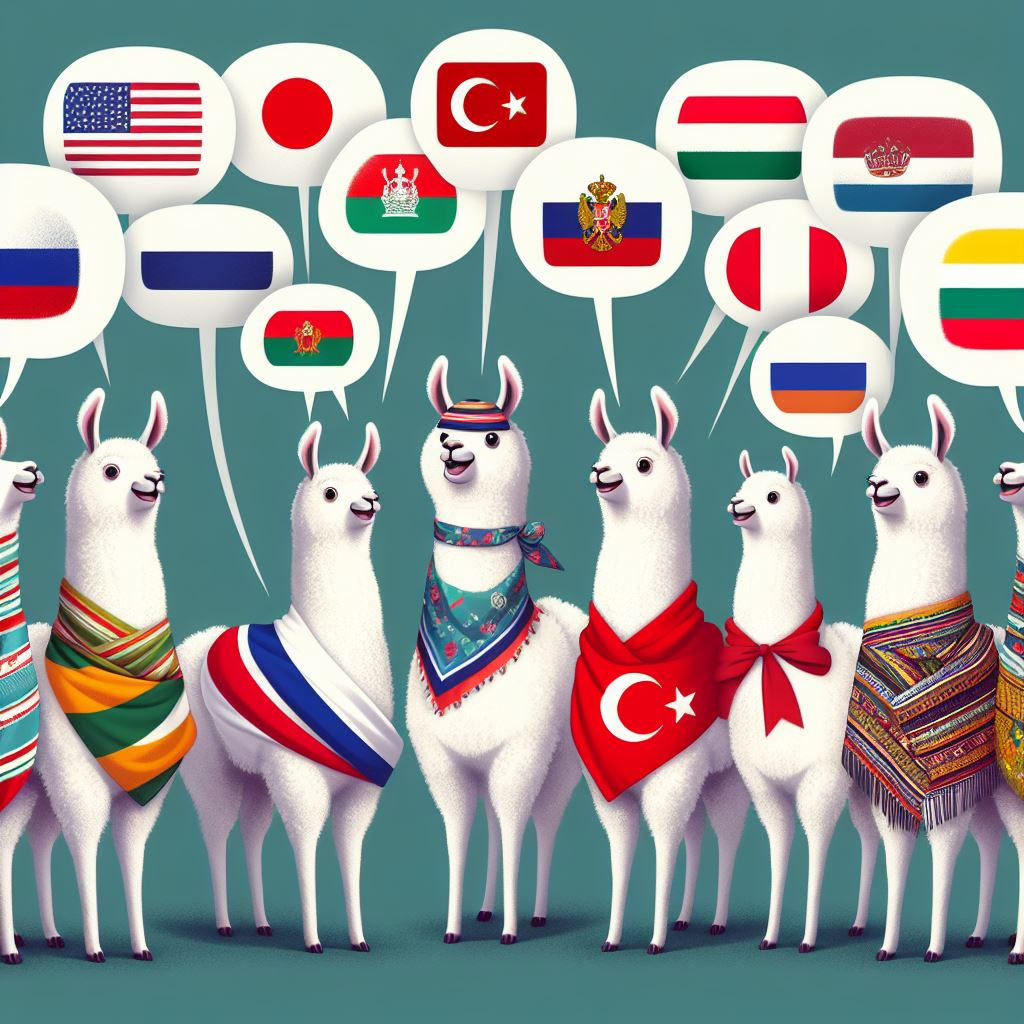SambaLingo-Thai-Chat-70B

SambaLingo-Thai-Chat-70B is a human aligned chat model trained in Thai and English. It is trained using direct preference optimization on top the base model SambaLingo-Thai-Base-70B. The base model adapts Llama-2-70b to Thai by training on 26 billion tokens from the Thai split of the Cultura-X dataset. Try This Model at SambaLingo-chat-space.
Model Description
- Developed by: SambaNova Systems
- Model type: Language Model
- Language(s): Thai, English
- Finetuned from model: Llama-2-70b
- Paper: SambaLingo: Teaching Large Language Models New Languages
- Blog Post: sambalingo-open-source-language-experts
Getting Started
Loading Model With Hugging Face
Please make sure to set use_fast=False when loading the tokenizer.
from transformers import AutoModelForCausalLM, AutoTokenizer
tokenizer = AutoTokenizer.from_pretrained("sambanovasystems/SambaLingo-Thai-Chat-70B", use_fast=False)
model = AutoModelForCausalLM.from_pretrained("sambanovasystems/SambaLingo-Thai-Chat-70B", device_map="auto", torch_dtype="auto")
Interacting With Model Pipeline
Please make sure to set use_fast=False when loading the tokenizer.
from transformers import pipeline
pipe = pipeline("text-generation", model="sambanovasystems/SambaLingo-Thai-Chat-70B", device_map="auto", use_fast=False)
messages = [
{"role": "user", "content": {YOUR_QUESTION}},
]
prompt = pipe.tokenizer.apply_chat_template(messages, tokenize=False, add_generation_prompt=True)
outputs = pipe(prompt)[0]
outputs = outputs["generated_text"]
Suggested Inference Parameters
- Temperature: 0.8
- Repetition penalty: 1.0
- Top-p: 0.9
Prompting Guidelines
To prompt this model, please use the following chat template:
<|user|>\n{question}</s>\n<|assistant|>\n
Example Prompts and Generations
<|user|>
ประเทศไทยช่วงเช้าเคารพธงชาติเมื่อไร</s>
<|assistant|>
ในประเทศไทย เวลาเคารพธงชาติคือเวลา 08.00 น. และ 18.00 น. ทุกวัน ประชาชนจะยืนตรงและร้องเพลงชาติในช่วงเวลาเหล่านี้เพื่อเป็นสัญลักษณ์ของความรักชาติและความเคารพต่อประเทศ
Training Details
The alignment phase follows the recipe for Zephyr-7B, and comprises two stages: supervised fine-tuning (SFT) and Direct Performance Optimization (DPO).
The SFT phase was done on the ultrachat_200k dataset mixed with the Google translated version of the ultrachat_200k dataset. It was trained for one epoch with global batch size 512 and max sequence length 2048 tokens. We used a linear decay learning rate of 2e-5 and 10% warmup.
The DPO phase was done on the ultrafeedback dataset and cai-conversation-harmless dataset, mixed with 10% of the data Google translated. It was trained with global batch size 32 and for three epochs. We used a linear decay learning rate of 5e-7, 10% warmup and β=0.1 as the regularization factor for DPO.
Tokenizer Details
We extended the vocabulary of the base llama model from 32,000 tokens to 57,000 tokens by adding up to 25,000 non-overlapping tokens from the new language.
Evaluation
For evaluation results see our paper: SambaLingo: Teaching Large Language Models New Languages
Uses
Direct Use
Use of this model is governed by the Meta’s Llama 2 Community License Agreement. Please review and accept the license before downloading the model weights.
Out-of-Scope Use
SambaLingo should NOT be used for:
- Mission-critical applications
- Applications that involve the safety of others
- Making highly important decisions
Bias, Risks, and Limitations
Like all LLMs, SambaLingo has certain limitations:
- Hallucination: Model may sometimes generate responses that contain plausible-sounding but factually incorrect or irrelevant information.
- Code Switching: The model might unintentionally switch between languages or dialects within a single response, affecting the coherence and understandability of the output.
- Repetition: The Model may produce repetitive phrases or sentences, leading to less engaging and informative responses.
- Coding and Math: The model's performance in generating accurate code or solving complex mathematical problems may be limited.
- Toxicity: The model could inadvertently generate responses containing inappropriate or harmful content.
Acknowledgments
We extend our heartfelt gratitude to the open-source AI community; this endeavor would not have been possible without open source. SambaNova embraces the open-source community and aspires to actively contribute to this initiative.
We would like to give a special thanks to the following groups:
- Meta for open sourcing LLama 2 and open sourcing FLORES-200 dataset
- Nguyen et al for open sourcing CulturaX dataset
- CohereAI for releasing AYA-101 and open sourcing a multilingual instruction tuning dataset
- EleutherAI for their open source evaluation framework
- Hugging Face-H4 team for open source the zephyr training recipe and alignment handbook repo
Cite SambaLingo
@misc{csaki2024sambalingo,
title={SambaLingo: Teaching Large Language Models New Languages},
author={Zoltan Csaki and Bo Li and Jonathan Li and Qiantong Xu and Pian Pawakapan and Leon Zhang and Yun Du and Hengyu Zhao and Changran Hu and Urmish Thakker},
year={2024},
eprint={2404.05829},
archivePrefix={arXiv},
primaryClass={cs.CL}
}
- Downloads last month
- 14